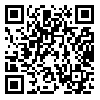BibTeX | RIS | EndNote | Medlars | ProCite | Reference Manager | RefWorks
Send citation to:
URL: http://jsmt.khu.ac.ir/article-1-382-en.html
Hamstrings (Hams) to Quadriceps (Quadr) strength ratio is known as a risk factor for Anterior Cruciate Ligament (ACL) injury and affects by knee and hip flexion angles. Gluteus Maximus (Gmax) muscle acts as a synergist for Hams in hip extension in a closed kinetic chain. The aim of this study was to investigate the effect of Gmax strengthening exercises on the kinetic and kinematic risk factors of ACL injury when single-leg landing from a jump. 25 volunteer women aged 18-30 years were assigned into control (n =13) and experimental (n =12) groups. Maximum isometric strength of Gmax, hip and knee joint angles and ground reaction force (GRF) was measured at landing, by dynamometer, 2D imaging and foot scan respectively,. After 8 weeks of 3 sessions of Gmax resistance training, Following the significant within-subject difference for GRF (F=5.245, P=0.032) by using Two-way mixed model ANOVA, Pre and post-test Differences were significant with 16.63% decrease (P= 0.038, t=2.354). Differences between pre and post-test peak force, time to peak, mean joint angles, impact and load rate were not significant (α = 0.05). According to a 4.55% and 3.47% increase in Gmax strength and time to peak force, and considering the fact that at the beginning of landing, the mechanical advantage of Hams is lower than that of Gmax, the risk of ACL injury could be reduced by reducing GRF following an increase in the Gmax strength.
Received: 2019/12/2 | Accepted: 2019/11/1 | Published: 2021/09/20
| Rights and permissions | |
 |
This work is licensed under a Creative Commons Attribution-NonCommercial 4.0 International License. |







